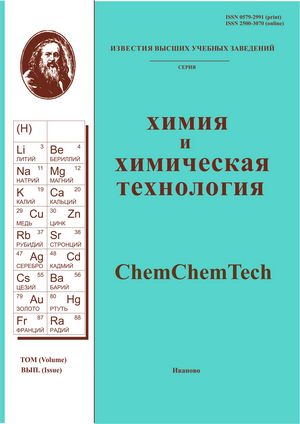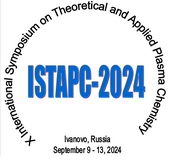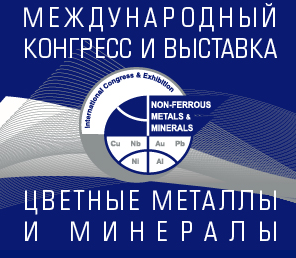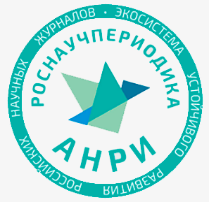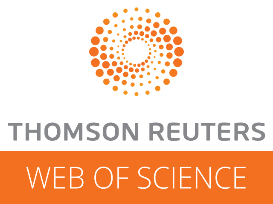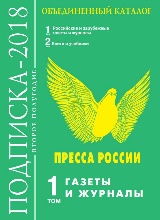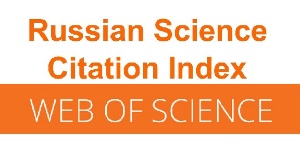ПЛАЗМОХИМИЧЕСКОЕ ПОЛУЧЕНИЕ ОКСИДОВ АЗОТА В ВОЗДУШНОЙ ПЛАЗМЕ ДЛЯ МЕДИЦИНСКИХ ЦЕЛЕЙ
Аннотация
Окись азота является многофункциональным физиологическим регулятором, стимулирующим процессы регенерации тканей в организме, что обуславливает высокую эффективность его терапевтического использования в различных областях медицины. В обзоре рассмотрены механизмы образования оксида азота в плазме газового разряда и биологические механизмы воздействия плазменного потока, содержащего оксид азота, на ткани. Показано, что в плазме воздуха при атмосферном давлении кроме оксида азота образуются и другие биологически активные соединения, такие двуокись азота и перекись водорода. Синергетическое действие пар молекул NO/H2O2 и NO/O2, присутствующих в плазменном потоке, приводит к многократному увеличению стерилизационной активности плазменной смеси газов по отношению к бактериям, при этом токсичность таких смесей по отношению к живым клеткам минимальна. Поток плазменного газа оказывает терапевтическое воздействие на ткани организма. С одной стороны, поток газа содержит молекулы Н2О2, NO и NO2, которые обладают антимикробным действием и приводят к эффективной стерилизации раны, а с другой стороны присутствие значительной концентрации NO вызывает эффективную регенерацию в пораженных тканях. Эти процессы дополняют друг друга, что в конечном итоге приводит к эффективному вылечиванию таких сложных болезней, как трофическая язва, осложненная диабетом, и других заболеваний в области онкологии, офтальмологии, стоматологии, гнойной хирургии, военно-полевой медицины, и др. Описаны особенности образования оксида азота в различных типах разряда, включая дуговой разряд, скользящую дугу, радиочастотный и СВЧ разряды, а также импульсные разряды различного типа. Проанализированы зависимости выхода оксида азота от вида разряда и таких параметров плазмы как мощность, скорость потока газа, конфигурация электродов и др. Проведено сопоставление эффективности образования оксида азота в различных разрядах.
Литература
Fleming I., Busse R. Endothelial disfunction: a novel therapeutic target. NO: the primary EDRF. J. Mol. Cell Cardiol. 1999. V. 31. P. 5-11. DOI: 10.1006/jmcc.1998.0839.
Li H., Forstermann U. Nitric oxide in the pathogenesis of vascular disease. J. Pathol. 2000. V. 190. P. 244-254. DOI: 10.1002/(SICI)1096-9896(200002)190:3<244::AID-PATH575> 3.0.CO;2-8.
Patel R.P., Moellering D., Murphy Ulrich J., Jo H., Beckman J.S., Darley-Usmar V. Cell signaling by reactive nitrogen and oxy-gen species in atherosclerosis. Free Rad. Biol. Med. 2000. V. 28. P. 1780-1794. DOI: 10.1016/S0891-5849(00)00235-5.
Yang T., Zelikin A.N., Chandrawati R. Progress and promise of nitric oxide-releasing platforms. Adv. Sci. 2018. V. 5. N 6. P. 1701043. DOI: 10.1002/advs.201701043.
Graves D.B. Low temperature plasma biomedicine: A tutorial review. Phys. Plasmas. 2014. V. 21. N 8. P. 080901. DOI: 10.1063/1.4892534.
Keh D., Gerlach H., Falke K. Inhalation therapy with nitric oxide gas. In: Oxide Nitric (ed) Berndmayer. Heidelberg: Springer. 2000. 399 p. DOI: 10.1007/978-3-642-57077-3_18.
Ichinose F., Roberts J.D., Zapol W.M. Inhaled nitric oxide a selective pulmonary vasodilator: current uses and therapeutic potential. Circulation. 2000. N 4109. P. 3106–3111. DOI: 10.1161/01.CIR.0000134595.80170.62.
Bhatraju P., Crawford J., Hall M., Lang J.D. Inhaled nitric oxide: current clinical concepts. Nitric Oxide. 2015. N 50. P. 114–128. DOI: 10.1016/j.niox.2015.08.007.
Shekhter A.B., Kabisov R.K., Pekshev A.B., Kozlov N.P., Perov I.L. Experimental and clinical substantiation of plasmadynamic therapy of wounds with nitric oxide. Bull. Experiment. Biol. Medits. 1998. V. 126. N 8. P. 210-215 (in Russian). DOI: 10.1007/BF02446923.
Vasilets V.N., Shekhter A.B. Medical and biological applications of plasma sources of nitrogen oxides. Izv. Vyssh. Uchebn. Zaved. Khim. Khim. Tekhnol. 2012. V. 55. N 4. P. 21-25 (in Russian)
Yang Y., Qi P.K., Yang Z.L., Huang N. Nitric oxide based strate-gies for applications of biomedical devices. Biosurf. Biotribol. 2015. V. 1. P. 177–201. DOI: 10.1016/j.bsbt.2015.08.003.
Fridman A. Plasma Chemistry. Cambridge: Cambridge University Press. 2008. 355 p.
Kuhn S., Bibinov N., Gesche R., Awakowicz P. Non-thermal at-mospheric pressure HF plasma source: generation of nitric oxide and ozone for bio-medical applications. Plasma Sources Sci. Technol. 2010. V. 19. P. 015013-17. DOI: 10.1088/0963-0252/19/1/015013.
Uhm H.S., Na Y.H., Choi E.H., Cho G. Dissociation and excitation coefficients of nitrogen molecules and nitrogen monoxide genera-tion. Phys. Plasmas. 2013. V. 20. N 8. P. 083502-14. DOI: 10.1063/1.4817291.
Vasilets V.N., Shekhter A.B, Guller A.E., Pekshev A.V. Air plasma-generated nitric oxide in treatment of skin scars and articular musculoskeletal disorders: Preliminary review of observations. Clinic. Plasma Med. 2015. V. 3. P. 32–39. DOI: 10.1016/j.cpme.2015.05.001.
Farias-Eisner R., Chaudhuri G., Aeberhard E., Fukuto J.M. The chemistry and tumoricidal activity of nitric oxide/hydrogen peroxide and the implications to cell resistance/susceptibility. J. Biol. Chem. 1996. V. 271. P. 6144–51. DOI: 10.1074/jbc.271.11.6144.
Kotamraju S., TampoY., Keszler A., Chitambar C.R., Joseph J., Haas A.L. Nitric oxide inhibits H2O2-induced transfer in receptor-dependent apoptosis in endothelial cells: role of ubiquitin-proteasome pathway. Proc. Natl. Acad. Sci. 2003. V. 100. P. 10653–8. DOI: 10.1073/pnas.1933581100.
Yoshioka Y., Kitao T., KishinoT., Yamamuro A., Maeda S. Nitric oxide protects macrophages from hydro-gen peroxide-induced apoptosis by inducing the for-mation of catalase. J. Immunol. 2006. V. 176. P. 4675–81. DOI: 10.4049/jimmunol.176.8.4675.
Pacelli R., Wink D.A., Cook J.A., Krishna M.C., DeGraff W., Friedman N. Nitric oxide potentiates hy-drogen peroxide-induced killing of Escherichia coli. J. Exp. Med. 1995. V. 182. P. 1469–79. DOI: 10.1084/jem.182.5.1469.
Chotigeat U., Khorana M., Kanjanapattanakul W. Inhaled nitric oxide in new-borns with severe hypoxic respiratory failure. J. Med. Assoc. Thail. 2007. V. 90. P. 266–71.
Reshetov I.V., Kabisov R.K., Shekhter A.B., Pekshev A.V., Maneiylova M.V. The use of air-plasma apparatus "Plason" in the modes of coagulation and NO-therapy in reconstructive plastic sur-gery in cancer patients. Annal. Plastich. Rekonstr. Estet. Khirurgii. 2000. N 4. P. 24-39 (in Russian).
Fridman G., Friedman G., Gutsol A., Shekhter A.B., Vasilets V.N., Fridman A. Applied plasma medicine. Plasma Proc. Polym. 2008. V. 5. P. 503–33. DOI: 10.1002/ppap.200700154.
Vasilets V.N., Gutsol A., Shekhter A. B., Fridman A. Plasma med-icine. High Energy Chem. 2009. V. 43. P. 229–33. DOI: 10.1134/S0018143909030126.
Pekshev A.V., Kozlov N.P., Vagapov A.B., Malikov V.N., Sharapov N.A. The device "Plason" - the principles of the formation of air-plasma and NO-containing streams. In the book. "NO therapy: theoretical aspects, clinical experience and problems of the use of exogenous nitric oxide in medicine." M: Mir. 2001. 191 p. (in Rus-sian)
Deng X.L., Nikiforov A.Y., Vanraes P., Leys C. Direct current plasma jet at atmospheric pressure operating in ni-trogen and air. J. Appl. Phys. 2013. V. 113. N 2. P. 023305-10. DOI: 10.1063/1.4774328.
Gundorova R.A., Chesnokova N.B., Shekhter A.B., Davydova N.G., Pekshev A.V., Kvasha O.I., Beznos O.V., Gorbasheva O.A. Effect of a gas stream contain-ing nitric oxide on the structures of the eyeball (experi-mental study). Vest. Oftalmol. 2001. N 4. P. 29-32 (in Russian).
Czernichowski A. Gliding arc: applications to engineering and environment control. Pure Appl. Chem. 1994. V. 66. N 6. P. 1301–1310. DOI: 10.1351/pac199466061301.
Fridman A., Nester S., Kennedy L.A., Saveliev A., Mu-taf-Yardimci O. Gliding arc gas discharge. Prog. Energy. Combust. Sci. 1999. V. 25. N 2. P. 211–231. DOI: 10.1016/S0360-1285(98)00021-5.
Richard F., Cormier J.M., Pellerin S., Dalaine V., Chapelle J. NO production in a gliding arc discharge. In: Proceedings of the 4th in-ternational thermal plasma process conference. 1997. P. 343–351.
Bo Z., Yan J., Li X., Chi Y., Cen K. Nitrogen dioxide formation in the gliding arc discharge assisted decomposi-tion of volatile organic compounds. J. Hazard Mater. 2009. V. 166. N 2. P. 1210–1216. DOI: 10.1016/j.jhazmat.2008.12.030.
Gritsinin S.I., Knyazev V.Yu., Kossyi I.A., Popov N.A. Microwave torch as a plasma-chemical generator of nitro-gen oxides. Fizika Plazmy. 2006. V. 32. N 6. P. 565–570 (in Russian). DOI: 10.1134/S1063780X06060092.
Taras P., Dusk V., Vyskocl J. Study of the NO synthesis in a microwave plasma at atmospheric pressure. Acta Phys. Slov. 1985. V. 35. N 2. P. 112–117.
Uhm H.S., Cho S.C., Park I.G., Hong M.S. Reduction of plasma nitrogen oxides by flames of hydrocarbon fuel. J. Korean. Phys. Soc. 2008. V. 52. P. 1800–1803. DOI: 10.3938/jkps.52.1800.
Kovacs R., Bibinov N., Awakowicz P., Porteanu H.E., Kuhn S., Gesche R. An integrated atmospheric microwave plasma source. Plasma Proc. Polym. 2009. V. 6(S1). P. S233–S236. DOI: 10.1002/ppap.200930603.
Liebmann J., Scherer J., Bibinov N., Rajasekaran P., Kovacs R., Gesche R., Awakowicz P., Kolb-Bachofen V. Biological effects of nitric oxide generated by an at-mospheric pressure gas-plasma on human skin cells. Ni-tric Oxide. 2011. V. 24. N 1. P. 8–16. DOI: 10.1016/j.niox.2010.09.005.
Lavoie G.A., Heywood J.B., Keck J.C. Experimental and theoreti-cal study of nitric oxide formation in internal combustion engines. Combust. Sci. Technol. 1970. V. 1. N 4. P. 313–326. DOI: 10.1088/0963-0252/19/1/015013.
Stoffels E., Gonzalvo Y.A., Whitmore T.D., Seymour D.L., Rees J.A. A plasma needle generates nitric oxide. Plasma Sources Sci. Technol. 2006. V. 15. N 3. P. 501–506. DOI: 10.1088/0963-0252/15/3/028.
Pipa A.V., Bindemann T., Foest R., Kindel E., Welt-mann K.D. Absolute production rate measurements of ni-tric oxide by an atmospheric pressure plasma jet (APPJ). J. Phys. D. Appl. Phys. 2008. V. 41. N 19. P. 194011-19. DOI: 10.1088/0022-3727/41/19/194011.
Van Gessel A.F.H., Alards K.M.J., Bruggeman P.J. NO production in an RF plasma jet at atmospheric pressure. J. Phys. D. Appl. Phys. 2013. V. 46. N 26. P. 265202-12. DOI: 10.1088/0022-3727/46/26/265202.
Iseni S., Zhang S., van Gessel A.F.H., Hofmann S., van Ham B.T.J, Reuter S., Weltmann K.D., Bruggeman P.J. Nitric oxide density distributions in the effluent of an RF argon APPJ: effect of gas flow rate and substrate. New J. Phys. 2014. V. 16. N 12. P. 123011. DOI: 10.1088/1367-2630/16/12/123011.
Gaens W., Bruggeman P.J., Bogaerts A. A numerical analysis of the NO and O generation mechanism in a needle-type plasma jet. New J. Phys. 2014. V. 16. N 6. P. 063054-60. DOI: 10.1088/1367-2630/16/6/063054.
Hu H., Liang H., Li J, Zhao Q., He J. Study on production of inhaled nitric oxide for medical applications by pulsed discharge. IEEE Trans. Plasma. Sci. 2007. V. 35. N 3. P. 619–625. DOI: 10.1109/TPS.2007.896782.
Namihira T., Katsuki S., Hackam R., Akiyama H., Okamoto K. Production of nitric oxide using a pulsed arc discharge. IEEE Trans. Plasma Sci. 2002. V. 30. N 5. P. 1993–1998. DOI: 10.1109/TPS.2002.807502.
Namihira T., Tsukamoto S., Wang D., Katsuki S., Hackam R., Okamoto K., Akiyama H. Production of ni-tric monoxide using pulsed discharges for a medical ap-plication. IEEE Trans. Plasma Sci. 2000. V. 28. N 1. P. 109–114. DOI: 10.1109/27.842877.
Sakai S., Matsuda M., Wang D., Namihira T., Akiyama H., Okamoto K., Toda K. Nitric oxide generator based on pulsed arc discharge. Acta Phys. Polonica A. Gen. Phys. 2009. V. 115. N 6. P. 1104–1106. DOI: 10.12693/APhysPolA.115.1104.
Yu B., Muenster S., Blaesi A.H., Bloch D.B., Zapol W.M. Producing nitric oxide by pulsed electrical dis-charge in air for portable inhalation therapy. Sci. Transl. Med. 2015. V. 7. N 294. P. 107-111. DOI: 10.1126/scitranslmed.aaa3097.
Sakai S, Matsuda M, Wang D, Kiyan T, Namihira T, Akiyama H, Okamoto K, Toda K. A compact nitric ox-ide supply for medical application. In: 16th IEEE interna-tional pulsed power conference. 2007. V. 1. P. 752–755. DOI: 10.1109/PPPS.2007.4651949.
Hu H., Weipeng C., Jinli Z., Xi L., Junjia H. Influence of plasma temperature on the concentration of NO pro-duced by pulsed arc discharge. Plasma Sci. Technol. 2012. V. 14. N 3. P. 257–262. DOI: 10.1088/1009-0630/14/3/13.
Hu H., Bin B., Heli W., Haiyan L., Junjia H., Zhenghao H., Jin L. The effect of flow distribution on the concentration of NO pro-duced by pulsed arc discharge. Plasma Sci. Technol. 2007. V. 9. N 6. P. 766-769. DOI: 10.1088/1009-0630/9/6/30.
Korolev Y.D., Frants O.B., Landl N.V., Suslov A. Low-current plasmatron as a source of nitrogen oxide mole-cules. IEEE Trans. Plasma Sci. 2012.V. 40. N 11. P. 2837–2842. DOI: 10.1109/TPS.2012.2201755.
Rousseau A., Dantier A., Gatilova L., Ionikh Y., Ropcke J., Tolmachev Y. On NOx production and vola-tile organic compound removal in a pulsed microwave discharge in air. Plasma Sources Sci. Technol. 2005. V. 14. N 1. P. 70–75. DOI: 10.1088/0963-0252/14/1/009.

